The Engine Control Module (ECM) monitors the conditions required for optimum combustion of fuel in the cylinder through sensors located at strategic points around the engine. From these sensor inputs, the engine control module can adjust the fuel quantity and timing of the fuel being delivered to the cylinders.
The main features are as follows:
- A single ECM controls the fuel injection system and the ignition system. The ECM incorporates short circuit protection and can store intermittent faults on certain inputs. TestBook can interrogate the ECM for these stored faults.
- The ECM is electronically immobilised preventing the engine from being started unless it receives a coded signal from the anti-theft control unit.
- In conjunction with the throttle position sensor the ECM uses the speed/density method of air flow measurement to calculate fuel delivery. This method measures the inlet air temperature and inlet manifold pressure and assumes that the engine is a calibrated vacuum pump, with its characteristics stored in the ECM, it can then determine the correct amount of fuel to be injected.
- A separate diagnostic connector, located on the passenger compartment fusebox, allows engine tuning or fault diagnosis to be carried out using TestBook without disconnecting the ECM harness multiplug.
- The ECM harness multiplug incorporates specially plated pins to minimise oxidation and give improved reliability.
- The ECM controls the operation of the radiator and air conditioning cooling fans, based on signals received from the engine coolant temperature sensor and trinary switch. The engine compartment cooling fan receives signals from the ambient air temperature sensor. If a high engine coolant temperature is detected the ECM will prevent the air conditioning system from operating.
- If certain system inputs fail, the ECM implements a back-up facility to enable the system to continue functioning, although at a reduced level of performance.
IGNITION SYSTEM - MPi MEMS 1.9
The ECM determines the optimum ignition timing based on the signals from the following sensors:
1. Crankshaft position sensor - Engine speed and crankshaft position
2. Manifold absolute pressure sensor - Engine load
3. Engine coolant temperature sensor - Engine temperature
4. Manifold absolute pressure sensor - Throttle pedal released
The engine management system uses no centrifugal or vacuum advance. Timing is controlled by the ECM which is energised by the main relay within the relay module. Spark distribution is achieved by means of a rotor arm and distributor mounted at the No.4 cylinder end of the inlet camshaft.
BASIC IGNITION TIMING - MPi
Crankshaft position sensor
The speed and position of the engine is detected by the crankshaft position (CKP) sensor which is bolted to, and projects through, the engine adapter plate adjacent to the flywheel. The CKP sensor is an inductive sensor consisting of a bracket mounted body containing a coil and a permanent magnet which provides a magnetic field. The CKP sensor is situated so that an air gap exists between it and the flywheel. Air gap distance is critical for correct operation. The flywheel incorporates a reluctor ring which consists of 32 poles spaced at 1°intervals, with 4 missing poles at °, 12°, 18° and 31°. The missing poles inform the ECM when to operate the groups of injectors. When the flywheel rotates, as a pole passes the CKP sensor it disturbs the magnetic field inducing a voltage pulse in the coil. This pulse is transmitted to the ECM. By calculating the number of pulses that occur within a given time, the ECM can determine the engine speed. The output from the CKP sensor when used in conjunction with that from the manifold absolute pressure sensor provides idle stabilisation and reference for injection timing.
Manifold absolute pressure sensor
The manifold absolute pressure (MAP) sensor is located within the ECM and detects manifold pressure via a hose connected to the inlet manifold. The MAP sensor converts pressure variations into graduated electrical signals which can be read by the ECM. Increases and decreases in the manifold pressure provide the ECM with an accurate representation of the load being placed on the engine allowing the ECM to adjust the quantity of fuel being injected and the ignition timing to achieve optimum fuelling of the engine.
IGNITION TIMING COMPENSATION - MPi
Engine coolant temperature sensor
The engine coolant temperature (ECT) sensor is a thermistor (a temperature dependent resistor), i.e. the voltage output varies in proportion to temperature. The ECT sensor is located in the front of the coolant outlet elbow and can be distinguished from the gauge sensor by its brown colour. The ECM constantly monitors this signal and uses the information to provide optimum driveability and emissions by advancing or retarding the ignition timing.
Idle speed control
With the throttle pedal released and the engine at idle, the ECM uses the fast response of ignition timing to maintain idle stabilisation. When loads are placed on or removed from the engine, the ECM senses the change in engine speed, and in conjunction with adjusting the idle air control (IAC) valve, advances or retards the ignition timing to maintain a specified idle speed. When load is removed from the engine, the IAC valve returns to its original position and the ignition timing returns to the idle setting.
NOTE: Due to the sensitivity of this system the ignition timing will be constantly changing at idle speed.
IGNITION COMPONENTS -MPi
Ignition coil
The coil for the programmed ignition system is mounted on the back of the engine. The coil has a lower primary winding resistance (0.63 to 0.77 ohms at 2°C) than a coil in a conventional ignition system. This allows the full h.t. output to be reached faster and so makes the coil operation more consistent throughout the engine speed range.
Distributor cap and rotor arm
1. Distributor cap
2. Rotor arm
3. Retaining screw
4. Anti-flash shield
The distributor cap, carrying a central carbon brush and four h.t. lead pick-ups, is located at the No.4 cylinder end of the inlet camshaft and surrounds the rotor arm. The rotor arm is secured by a retaining screw to a 'D' shaped stub shaft, which is press fitted into a vibration absorbing bush in the camshaft, and is protected from oil contamination by an anti-flash shield which incorporates an oil drain.
FUEL SYSTEM - MPi
Engine Control Module (ECM)
The Modular Engine Management System (MEMS) is controlled by an ECM mounted on the bulkhead in the engine compartment. The ECM is an adaptive unit which over a period of time learns the load and wear characteristics of the engine it controls. The ECM remembers and updates two main engine requirements when the engine is running at normal operating temperature:
1. The position of the idle air control (IAC) valve required to achieve a specified idle speed. This is then used as a reference for IAC valve movement to achieve idle speed under all load conditions.
2. The fuelling change or offset required to achieve a set oxygen sensor output indicating an air fuel ratio of 14.7:1. This allows the system to provide the correct fuelling without having to apply excessive adjustments to the fuelling which can adversely affect the emissions and driveability.
NOTE: After fitting a different ECM, TestBook will be required to reprogram the ECM with the code from the anti-theft control unit and to perform a full engine tune procedure.
The ECM inputs and outputs are shown in the following table.
INPUTS
Crankshaft position sensor
Ambient air temperature sensor
Manifold absolute pressure sensor
Engine coolant temperature sensor
Intake air temperature sensor
Heated oxygen sensor
Throttle position sensor
Diagnostic input
Battery supply
Starter signal
Earth supply
Anti-theft control unit
A/C Trinary switch
OUTPUTS
Ignition coil
Injectors
Idle air control valve
ECM Fuel pump relay
Diagnostic connector
Heated oxygen sensor relay
Main relay
Cooling fans
Air conditioning fans
Engine bay fans
Purge valve
Intake air temperature sensor
The intake air temperature (IAT) sensor is located in the side of the inlet manifold. The IAT sensor is of the negative temperature coefficient (NTC) type, designed to reduce its resistance with increasing temperature. The ECM receives a signal from the IAT sensor proportional to the temperature of the intake air. When this signal is used in conjunction with the signal from the manifold absolute pressure sensor. The ECM calculates the volume of oxygen in the air and adjusts the quantity of fuel being injected, to achieve optimum fuelling of the engine.
Injectors
The four fuel injectors are fitted between the pressurised fuel rail and inlet manifold. Each injector comprises a solenoid operated needle valve and a specially designed nozzle to ensure good fuel atomisation. The injectors are controlled in grouped mode with 2 & 3 being grouped and 1 & 4 being grouped, with the injectors in each group being operated alternatively. The ECM determines when to operate the injectors based on the signal it receives from the crankshaft position sensor. The ECM provides an earth signal for the period the injectors are required to be open, the injector solenoids are energised and fuel is sprayed into the inlet manifold onto the back of the inlet valves. The ECM carefully meters the amount of fuel injected by adjusting the injector opening period (pulse width). During cranking, when the engine speed is below approximately 400 rev/min, the ECM increases the injector pulse width to aid starting. The amount of increase depends upon engine coolant temperature. To prevent flooding, the ECM periodically inhibits the operation of the injectors.
Throttle housing
The throttle housing is located between the inlet manifold and air intake hose and is sealed to the manifold by an O-ring. The throttle housing incorporates a throttle disc which is connected to the throttle pedal via the throttle lever and a cable. There are two breather pipes connected to the throttle housing, one either side of the throttle disc. When the engine is running with the throttle disc open, both pipes are subject to manifold depression and draw crankcase fumes into the manifold. When the throttle disc is closed, only the pipe on the inlet manifold side of the disc is subject to manifold depression. This pipe incorporates a restrictor to prevent engine oil being drawn into the engine by the substantially greater manifold depression. Mounted on the throttle housing are the throttle position sensor and idle air control valve.
Throttle position sensor
The throttle position (TP) sensor is a potentiometer attached to the throttle housing and is directly coupled to the throttle disc. The TP sensor is non-adjustable. Closed throttle is detected by the TP sensor which initiates idle speed control via the idle air control valve. The ECM supplies the TP sensor with a 5 volt supply and an earth path. The TP sensor returns a signal proportional to throttle disc position. Throttle disc movement causes voltage across the TP sensor to vary. The ECM calculates the rate of change of the voltage signal in positive (acceleration) or negative (deceleration) directions. From this the ECM can determine the required engine speed, rate of acceleration or rate of deceleration and apply acceleration enrichment, deceleration fuel metering or over-run fuel cut-off.
Idle air control valve
The idle air control (IAC) valve is mounted on the inlet manifold and controlled by the ECM. The IAC valve opens a pintle valve situated in an air passage in the throttle housing, allowing air to bypass the throttle disc and flow straight into the inlet manifold. By changing the amount the IAC valve is open the ECM can control engine idle speed and cold start air flow requirements by adjusting the flow of air in the passage. During cold starting the ECM indexes the IAC valve open slightly to provide a level of fast idle, dependent on engine coolant temperature. As the engine warms, fast idle is gradually decreased until normal operating temperature is reached. The position of the IAC valve can be checked using TestBook and should be within the range of 20 to 40 steps when the engine is running. If it is identified as being outside this range it can be adjusted to within range using TestBook. This ensures that the IAC valve is at the optimum position within its range for providing further movement to compensate for changes in engine load or temperature in accordance with signals from the ECM.
NOTE: The position of the throttle disc is preset during manufacture and the throttle position setting screw MUST NOT be adjusted.
Engine management relay module
The relay module is located on the bulkhead in the engine compartment behind the engine control module. The relay module contains the following relays:
- Main relay - energised when the ignition is switched on and supplies power to the ECM.
- Fuel pump relay - energised by the ECM for a short period when the ignition is switched on, during cranking and while the engine is running. - Starter relay - energised by the cranking signal from the ignition switch.
- Heated oxygen sensor relay - energised by the ECM and supplies current to the heated oxygen sensor element.
Fuel pump
The electric fuel pump is located inside the fuel tank and is energised by the ECM via the fuel pump relay in the relay module and the fuel cut-off inertia switch. The fuel pump delivers more fuel than the maximum load requirement for the engine, pressure is therefore maintained in the fuel system under all conditions.
Fuel pressure regulator
The pressure regulator is a mechanical device controlled by manifold depression and is mounted on one end of the fuel rail. The regulator ensures that fuel rail pressure is maintained at a constant pressure difference to that in the inlet manifold, as manifold depression increases the regulated fuel pressure is reduced in direct proportion. When pressure exceeds the regulator setting, excess fuel is returned to the fuel tank swirl pot which contains the fuel pump pick-up.
Inertia fuel shut-off switch
The electrical circuit for the fuel pump incorporates an inertia fuel shut-off (IFS) switch which, in the event of a sudden deceleration, breaks the circuit to the fuel pump preventing fuel being delivered to the engine. The IFS switch is situated in the engine compartment next to the ECM, and must be reset by pressing the rubber top before the engine can be restarted.
WARNING: ALWAYS check for fuel leaks and the integrity of fuel system
connections before resetting the switch.
Diagnostic connector
A diagnostic connector, located on the passenger compartment fusebox, allows engine tuning or fault diagnosis to be carried out using TestBook without disconnecting the ECM harness multiplug.
Heated oxygen sensor
The modular engine management system operates a closed loop emission system to ensure the most efficient level of exhaust gas conversion. Amend text and include subscript commands A heated oxygen sensor (HO2S) fitted in the exhaust manifold monitors the exhaust gases. It then supplies a small voltage proportional to exhaust oxygen content to the ECM. As the air/fuel mixture weakens, the exhaust oxygen content increases and so the voltage to the ECM decreases. If the mixture becomes richer so the oxygen content decreases and the voltage increases. From this signal the ECM can determine the air/fuel mixture being delivered to the engine, and can adjust the duration the injectors are open to maintain the ratio necessary for efficient gas conversion by the catalyst. The HO2S has an integral heating element to ensure an efficient operating temperature is quickly reached from cold. The electrical supply to the heater element is controlled by the ECM via the HO2S relay in the relay module.
Acceleration enrichment
When the throttle pedal is depressed, the ECM receives a rising voltage from the throttle position sensor and detects a rise in manifold pressure from the manifold absolute pressure sensor. The ECM provides additional fuel by increasing the normal injector pulse width and also provides a small number of extra additional pulses on rapid throttle openings.
Over-run fuel cut-off
The ECM implements over-run fuel cut-off when the engine speed is above 2000 rev/min with engine at normal operating temperature and the throttle position sensor in the closed position, i.e. the vehicle is "coasting" with the throttle pedal released. The ECM indexes the idle air control valve open slightly to increase the air flow through the engine to maintain a constant manifold depression to keep emissions low. Fuel is progressively reinstated as the throttle position sensor is opened.
Over-speed fuel cut-off
To prevent damage at high engine speeds the ECM will implement fuel cut-off at engine speeds above 7000 rev/min by inhibiting the earth path for the injectors, as engine speed falls to 6990 rev/min, fuel is progressively reinstated.
Ignition switch off
When the ignition is switched off, the ECM will keep the main relay energised for approximately 30 seconds while it drives the idle air control valve to its power down position, ready for the next engine start. The ECM then monitors the engine bay temperature using the ambient air temperature sensor. If the temperature is above a certain limit, the ECM will drive the engine bay fan for 8 minutes, and will then power down. If the engine bay temperature is below the limit the ECM will power down after 10 seconds. Engine compartment ambient air temperature sensor The ECM monitors the engine compartment temperature using the ambient air temperature sensor. When the temperature exceeds a certain limit, the engine bay fan relay is energised to run the fan. If the temperature continues to rise, and exceeds another higher limit, the engine bay warning lamp (in the instrument pack) is illuminated. If the ambient air temperature sensor fails, the engine bay fan will run while the ignition is on and the warning lamp will be permanently lit.
1. Air cleaner element
2. Throttle disc
3. Idle air control valve
4. Inlet manifold
5. Injector
6. Evaporative emission cannister, purge valve
7. Evaporative emission cannister
8. Engine Control Module (ECM)
9. Fuel trap - green connection to ECM
Intake air is drawn into the throttle body through an air filter element. Incorporated in the throttle body are the throttle disc and the throttle position sensor. Air passes from the throttle body to the inlet manifold where it is mixed with fuel injected by the injectors before the mixture is drawn into the combustion chamber. Inlet manifold depression is measured via a hose, by the MAP sensor which is incorporated in the ECM. A signal from the MAP sensor is used by the ECM to calculate the amount of fuel delivered by the injectors.
 Pengereman adalah hal yang paling penting diketahui pengendara saat berkendara sepeda motor. Ironisnya masih banyak pengendara sepeda motor yang tidak tahu teknik pengereman yang benar.
Pengereman adalah hal yang paling penting diketahui pengendara saat berkendara sepeda motor. Ironisnya masih banyak pengendara sepeda motor yang tidak tahu teknik pengereman yang benar.  Jakarta – PT Astra Honda Motor (AHM) semakin melengkapi line up produk skutiknya dengan meluncurkan Honda PCX (Personal Comfort Xaloon). Skutik berteknologi tinggi kelas dunia ini diharapkan akan memimpin tren skutik premium di Indonesia dengan pesona kemewahan dalam setiap detail desain bodinya.
Jakarta – PT Astra Honda Motor (AHM) semakin melengkapi line up produk skutiknya dengan meluncurkan Honda PCX (Personal Comfort Xaloon). Skutik berteknologi tinggi kelas dunia ini diharapkan akan memimpin tren skutik premium di Indonesia dengan pesona kemewahan dalam setiap detail desain bodinya. Honda PCX juga menawarkan sensasi kenyamanan berkendaran melalui desain sit-in riding position, ban tubeless berprofile besar yang stabil, dan suspensi belakang ganda. Selain itu, Honda PCX juga dilengkapi dengan intelligent key shutter yang berfungsi sebagai pengaman kunci kontak bermagnet, tuas pembuka bagasi bervolume 32 liter yang dapat menyimpan helm fullface, serta membuka tutup tanki bensin berkepasitas 6,2 liter.
Honda PCX juga menawarkan sensasi kenyamanan berkendaran melalui desain sit-in riding position, ban tubeless berprofile besar yang stabil, dan suspensi belakang ganda. Selain itu, Honda PCX juga dilengkapi dengan intelligent key shutter yang berfungsi sebagai pengaman kunci kontak bermagnet, tuas pembuka bagasi bervolume 32 liter yang dapat menyimpan helm fullface, serta membuka tutup tanki bensin berkepasitas 6,2 liter.

 Sometimes a bike is just a bike... there's no photoshopping going on here, guys. This is Uno, of course, a segway/motorcycle mashup shown publicly for the first time at the recent Toronto National Motorbike show. Technically it has two wheels, but they're right next to each other and it does balance on them under its own power.
Sometimes a bike is just a bike... there's no photoshopping going on here, guys. This is Uno, of course, a segway/motorcycle mashup shown publicly for the first time at the recent Toronto National Motorbike show. Technically it has two wheels, but they're right next to each other and it does balance on them under its own power. 












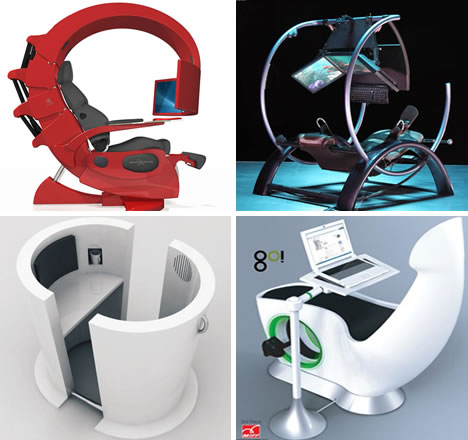
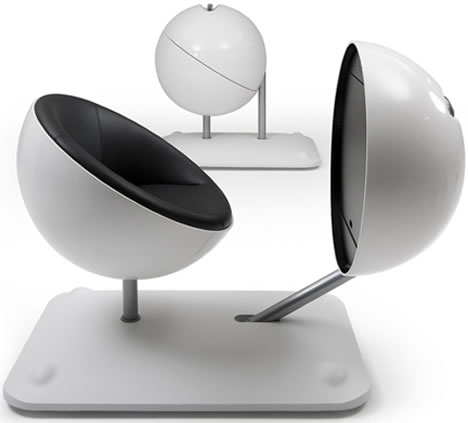
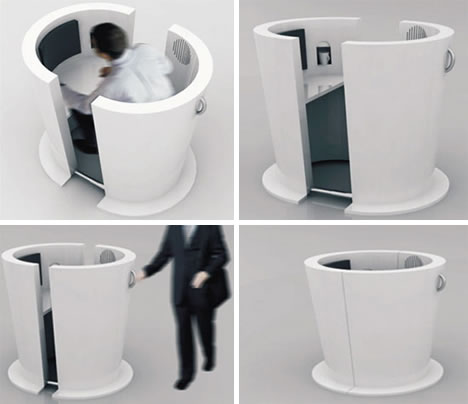
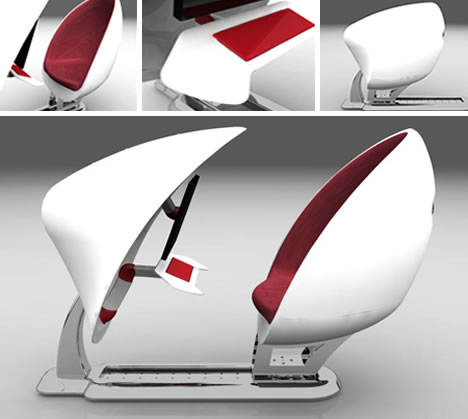
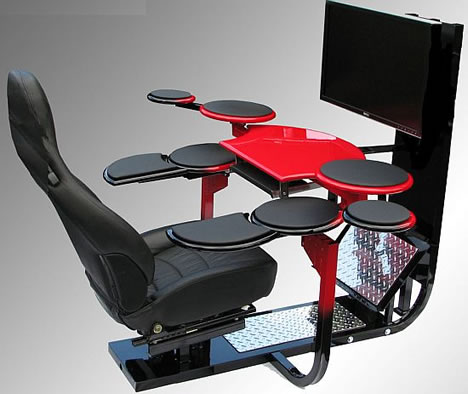
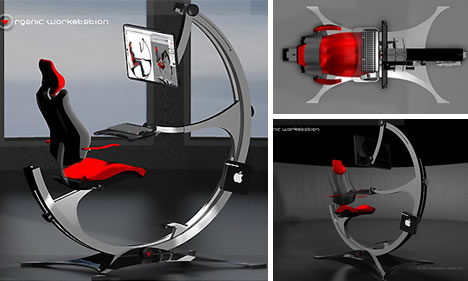
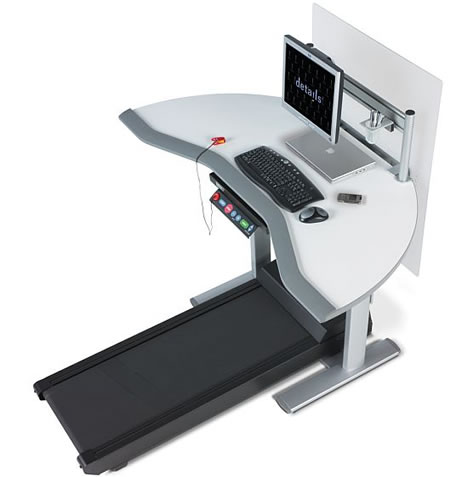

 Inspired by India's "buy one get one free" mentality, designer Ramesh Gound has created a concept where two motorbike owners can join them together, creating a fancy sports car for longer drives.
Inspired by India's "buy one get one free" mentality, designer Ramesh Gound has created a concept where two motorbike owners can join them together, creating a fancy sports car for longer drives.




















